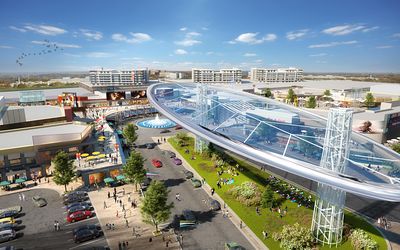In an era where online shopping has become the norm, traditional shopping malls are facing an existential crisis. The once bustling centers of commerce and community are now grappling with the challenge of staying relevant in a digital age. However, rather than succumbing to the pressures of e-commerce, many malls are undergoing a significant transformation, reinventing themselves to cater to the evolving needs and preferences of consumers. This makeover is not just about physical renovations; it’s a comprehensive reimagining of the shopping mall experience, designed to attract visitors, foster community, and ensure the survival of these retail hubs in the future.
The Rise of the ‘Experience Economy’
A key aspect of the mall makeover is the shift towards what is known as the ‘experience economy.’ In this model, the focus is not just on selling products but on providing memorable experiences that cannot be replicated online. This includes everything from interactive art installations and pop-up shops to gourmet food courts and entertainment venues like cinemas and arcades. By offering a mix of entertainment, leisure, and retail, malls are becoming destinations where people come to spend time, not just money.
Embracing Technology
Technology is another cornerstone of the mall makeover. From interactive digital directories and augmented reality (AR) experiences to mobile payment systems and Wi-Fi-enabled shopping, malls are leveraging technology to enhance the shopping experience. Some malls are even experimenting with virtual reality (VR) to create immersive shopping environments or to offer virtual fitting rooms, blurring the lines between the physical and digital shopping worlds.
Sustainability and Green Spaces
As environmental consciousness grows, malls are incorporating sustainability into their makeover plans. This includes everything from energy-efficient lighting and recycling programs to the creation of green spaces within the mall. Rooftop gardens, indoor parks, and eco-friendly materials are becoming common, not only to appeal to environmentally conscious consumers but also to create more inviting and relaxing spaces.
Community and Social Spaces
The future of malls is also about fostering a sense of community. Many malls are dedicating spaces for local artisans and small businesses, hosting events like farmers’ markets, workshops, and community gatherings. These initiatives not only support local economies but also create a sense of belonging and shared space, turning malls into community hubs.
Health and Wellness
Finally, health and wellness are becoming integral to the mall makeover. Fitness centers, yoga studios, and health-focused retailers are increasingly common, catering to the growing consumer interest in health and wellness. Some malls are even incorporating medical and wellness services, making them one-stop destinations for both retail therapy and personal well-being.
Conclusion
The transformation of shopping malls is a testament to the resilience and adaptability of physical retail spaces. By embracing experiences, technology, sustainability, community, and wellness, malls are not just surviving the digital age; they are thriving in it. The mall makeover is not just about reinventing these spaces for the future; it’s about reimagining them as vibrant, multifaceted hubs that serve the diverse needs and desires of modern consumers. As this transformation continues, it will be fascinating to see how malls continue to evolve and what new innovations they will introduce to keep pace with the ever-changing retail landscape.
